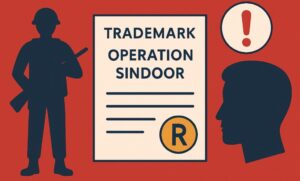In the realm of intellectual property rights and trademarks, the term “unconventional trademarks” has emerged as a captivating and evolving concept. These marks defy traditional definitions, often blurring the lines between what is considered standard and what is extraordinary. In India, where innovation knows no bounds, unconventional trademarks are gaining prominence, and they are shaping the future of branding and intellectual property protection. In this article, we delve into the world of unconventional trademarks, their types, famous examples, registration challenges, and the current legal status in India.
Table of Contents
ToggleUnderstanding Unconventional Trademarks
Unconventional trademarks, often referred to as non-conventional trademarks, diverge from the standard or traditional forms of trademarks we are familiar with, including logos, brand names, or slogans. These non-traditional trademarks are usually linked to human sensory experiences and perceptions, such as smell or taste marks, which can only be perceived by humans. That is not it, there are various other types of unconventional trademarks, let’s understand each one in detail.
- Sound Marks: These trademarks are characterized by a sequence of musical notes, distinctive sound patterns, or memorable jingles. A prime example is the iconic Nokia tune, instantly recognizable by its distinctive sound.
- Color Marks: These trademarks are defined by a specific color or a unique combination of colors associated with a product or service. A renowned instance is the use of a particular shade of pink for Owens-Corning insulation, making it a well-established color mark.
- Shape Marks: These marks pertain to the three-dimensional form of a product or its packaging. An illustrative example is the distinctive shape of the Coca-Cola bottle, which has become a timeless symbol in the world of branding.
- Taste Marks: Taste marks are based on the unique flavor or taste of a product. For example, a specific blend of herbs and spices in a seasoning mix.
- Smell Marks: Smell trademarks are based on specific scents or fragrances associated with a product or brand. Perfumes, scented candles, and aromatic products often rely on smell marks.
- Motion Marks: Motion marks involve dynamic movement, often seen in animated logos or specific sequences of motion. An iconic motion mark is the roaring lion featured in the MGM logo, instantly evoking a sense of cinematic grandeur.
- Position Marks: These trademarks define the specific placement or positioning of a sign on a product or its packaging. An emblematic instance is the strategic location of the Mercedes-Benz logo, typically positioned on the front grille of the car.
- Hologram Marks: Hologram marks utilize holographic images that exhibit change or movement when viewed from varying angles, adding a futuristic and captivating dimension to branding.
Challenges in registering Unconventional Marks in India
The process of registering unconventional trademarks in India presents a multitude of challenges, primarily centred around the requirement of graphical representation. According to Section 2(zb) of the Trademarks Act, 1999, a trademark is explicitly defined as “a mark capable of being represented graphically and capable of distinguishing the goods or services of one person from those of others ” This definition implies that a trademark should have a visual or graphic element that can be replicated in tangible or digital forms, and it must be distinct and easily distinguishable.
- Graphical representation
Sound Marks, representing a series of musical notes, jingles, or distinctive sound patterns, indeed pose a challenge in terms of graphical representation. However, it’s worth noting that they can be represented by notating the musical notes or providing a detailed description of the sound. In India, sound marks enjoy a relatively smoother registration process compared to other unconventional trademarks due to this capacity for graphical representation.
Color marks, despite their visual distinctiveness, pose difficulties due to the subjective nature of color perception, making the replication of precise shades or combinations in graphical form imprecise. Three-dimensional shape marks, exemplified by iconic designs like the Coca-Cola bottle, resist easy graphical representation as the intricate details often elude accurate capture in two dimensions. Further, presenting smell and taste marks graphically is challenging due to their non-visual nature and the subjective, complex, and evolving aspects of these sensory experiences. Motion marks, with their dynamic movements, can lose their essence when translated into static graphics, a challenge faced by animated logos. Marks defined by precise positioning on products or packaging, though distinctive, struggle to find precise graphical equivalents. Furthermore, taste, texture, and hologram marks, involving sensory and three-dimensional experiences, challenge conventional graphic representation methods.
- Distinctiveness
Furthermore, the requirement of distinctiveness introduces an additional layer of complexity. Unconventional marks, given their nature, may not inherently exhibit this distinctiveness. As mentioned earlier, many unconventional marks are linked to human sensory experiences and perceptions. Since human memory is imperfect, people might struggle to recall or could easily confuse such marks with others from different sources. This underscores the necessity to demonstrate acquired distinctiveness through extensive use and recognition in the market. The convergence of these factors collectively creates substantial obstacles in the registration of unconventional trademarks in India.
However, India is gradually adapting to the evolving landscape of unconventional trademarks. The judiciary and the Intellectual Property Office have recognized the importance of these marks in contemporary branding. Notable cases have set a precedent for the registration of unconventional marks, emphasizing the need for flexibility in interpretation.
For instance, the distinctive sound of a Harley-Davidson motorcycle’s engine was recognized as a sound mark. Similarly, the 3D shape of the Kit-Kat chocolate bar was registered as a shape mark.
Way Forward
As the world of branding continues to innovate and push boundaries, the concept of unconventional trademarks in India is expected to gain further recognition and acceptance. Brands will continue to explore new avenues of trademark protection, and the legal framework will likely adapt to accommodate these changes.
In conclusion, unconventional trademarks have transformed the way we perceive and protect intellectual property. While registering these marks may pose unique challenges due to the requirement of graphical representation and distinctiveness, the significance of well-known status and evolving legal frameworks in India offer hope for brand owners.
Frequently Asked Questions
- What are non-traditional marks in India?
Non-traditional marks in India encompass sound, color, shape, and motion marks, which deviate from standard text and logo trademarks.
- What are conventional marks?
Conventional marks refer to traditional symbols, logos, or brand names commonly used for trademark registration. These are standard forms of trademarks.
- What are distinctive marks examples?
Distinctive mark examples include the Apple logo, Nike’s swoosh symbol, and the Coca-Cola brand name, which are easily recognizable and associated with specific companies or products.
- What is an unconventional form of trademark?
An unconventional form of trademark includes unique elements like sound patterns, specific product shapes, or non-standard visual representations, which depart from traditional textual or graphical trademarks.





